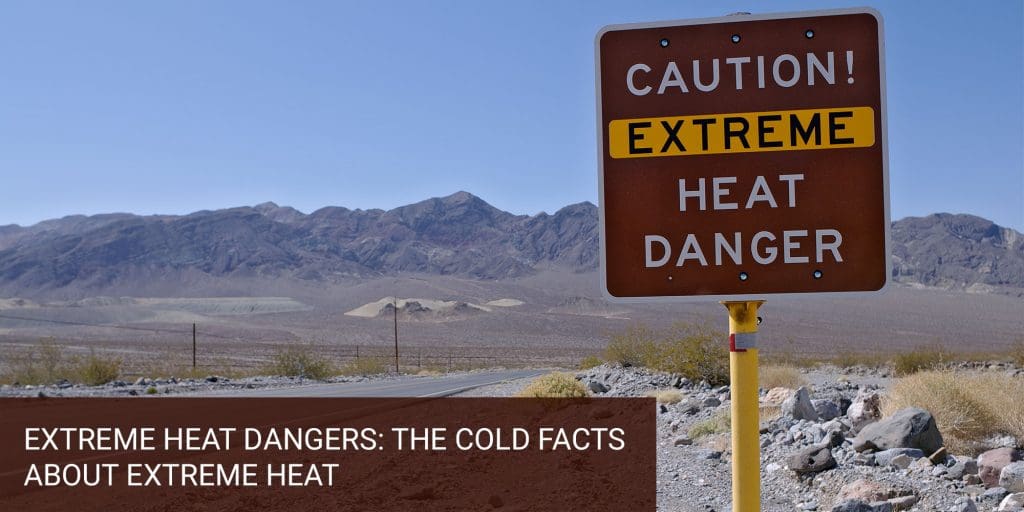Remember when “98 degrees” was mostly a reference to a 1990s boy band? With temperatures exceeding 100 degrees expected to continue in parts of the country, extreme heat related health problems are a real worry. Here’s a primer on how to handle hot weather health concerns and emergencies.
People suffer heat-related illness when their bodies are unable to compensate for the temperature and properly cool themselves. Normally, the body cools itself by sweating. But sometimes, sweating isn’t enough, causing a person’s body temperature to rise rapidly. Very high body temperatures may damage the brain or other vital organs.
Who’s at Risk From Extreme Heat?
According to the Centers for Disease Control and Prevention, several factors affect the body’s ability to cool itself during extremely hot weather. When the humidity is high, sweat will not evaporate as quickly, preventing the body from releasing heat quickly. And people who are physically ill, have heart disease or high blood pressure, or who take certain medications, such as for depression, insomnia, or poor circulation, may be affected by extreme heat.
While the elderly, children, and those with chronic disease are at highest risk, even the young and healthy can succumb to heat if they participate in strenuous physical activities during hot weather.
Air-conditioning is the No. 1 protection against heat-related illness and death. If a home is not air-conditioned, people can reduce their risk for heat-related illness by spending time in public facilities that are air-conditioned.
Extreme Heat & Heatstroke
What is it?
This potentially deadly condition occurs when the body is unable to regulate its temperature. Essentially the body’s internal thermostat malfunctions In addition, the sweating mechanism fails hampering the body’s ability to cool down. Body temperature may rise to 106 degrees F or higher within 10 to 15 minutes. Heat stroke can cause death or permanent disability if emergency treatment is not provided.
Warning signs:
- An extremely high body temperature (above 103 degrees F, orally)
- Red, hot, and dry skin (no sweating)
- Rapid, strong pulse
- Throbbing headache
- Dizziness
- Nausea
- Confusion
- Unconsciousness
What to do:
- Have someone call for emergency medical assistance while you begin to cool the person
- Get the victim to a shady area
- Remove outer clothing
- Aim a fan or air conditioner at the person
- Elevate his or her feet to counteract shock
- Cool the person rapidly using whatever methods you can. For example, immerse the person in a tub of cool water; place the person in a cool shower or spray with cool water from a garden hose; sponge the person with cool water (as tolerated without causing shivering.); or if the humidity is low, wrap the person in a cool, wet sheet and fan him or her vigorously.
- Monitor body temperature, and continue cooling efforts until the body temperature drops to 101 to 102 degrees F.
- Do not give an unconscious or semiconscious person fluid. The victim may inhale liquid into the lungs, which can lead to aspiration pneumonia.
- Take the body temperature every five minutes and continue your cooling efforts until the thermometer reads 102 degrees F or less.
Important: Heatstroke victims sometimes begin to twitch uncontrollably. In the event of a seizure, make sure that the person doesn’t injure himself on furniture. Never try to insert a spoon or other hard object into the mouth to prevent the victim from swallowing his tongue; simply turning his head to the side will suffice. The same advice applies if the person is vomiting, to keep his airway open.
Heat Exhaustion From Extreme Heat
This is a milder form of heat-related illness that can develop after one or a few days of exposure to high temperatures and inadequate or unbalanced replacement of fluids. It is the body’s response to an excessive loss of the water and salt contained in sweat. Those most prone to heat exhaustion are elderly people, people with high blood pressure, and people working or exercising in a hot environment.
Warning signs:
- Heavy sweating
- Paleness
- Muscle cramps
- Tiredness
- Weakness
- Dizziness
- Headache
- Nausea or vomiting
- Fainting
The skin may be cool and moist. The victim’s pulse rate will be fast and weak, and breathing will be fast and shallow. If heat exhaustion is untreated, it may progress to heat stroke. Seek medical attention immediately if any of the following occurs:
- Symptoms are severe
- The victim has heart problems or high blood pressure
What to do:
- Put the person in a cool place. Have him lie down with the feet elevated.
- Remove top clothing so that the body surface can give off heat.
- Sponge the entire body surface continuously with cool water (with children be especially careful to avoid causing shivering).
- Fan the person to increase heat loss from evaporation
- Give the person cool water to drink
- For persistent symptoms lasting more than an hour, see a doctor
Extreme Heat & Heat Cramps
These muscle pains or spasms, usually in the abdomen, arms or legs may occur during strenuous activity. Heat cramps mostly affect those who perspire freely, depleting their them of fluid.
What to do:
- Take the person to a cool place
- Give water or a sports beverage to drink
- Gently massage the affected muscle to bring relief
- Insist that he wait several hours after the cramping subsides before he resumes any physical activity; further exertion may lead to heat exhaustion or heat stroke
- If cramping continues after one hour, seek medical attention
Warning: If your fluid restricted regimen or taking water pills, ask your doctor how much you should drink while the weather is hot.
How Do You Deal With The Extreme Heat?
Share your tips in the comments below!
What Topics Would You Like to See Us Explore Next?
Email us at info@painresource.com with your ideas.
Are you on Facebook?
